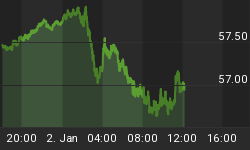As equity mutual fund outflows mount (Figure 1), stock market bulls argue that such outflows indicate that investor pessimism is high enough to serve as a contrarian indicator to support the buying of stocks However, other indicators, such as the American Association of Individual Investors (AAII) weekly sentiment survey, indicate that bearish sentiment has not yet reached an extreme and that bullish sentiment is in fact quite high.
Figure 1. Monthly Stock Mutual Fund Flows Since 2007 ($Billion)
Sources: ICI, Continental Capital Advisors
AAII has been publishing a weekly survey of investor sentiment since 1987 (Figures 2 and 3) In that survey, investors are asked if they are bullish, bearish or neutral on the stock market's outlook for the next six months Over the short-run, the indicator tends to mimic the stock market's recent performance.
Figure 2. Bullish sentiment in the late 1980s and early 1990s compared with today
Sources: American Association of Individual Investors, Continental Capital Advisors
While a 20% bullish reading has recently been an extreme reading of pessimism, Figure 2 shows that there were numerous times during the bull market of the 1980s and 1990s, one of the greatest of all time, when bullish sentiment was below 20% In contrast, since 2000, the stock market is in one of the greatest bear markets of all time, yet bullish sentiment remains above 20%
Figure 3. Bearish Sentiment Is Likely Heading Lower
Sources: American Association of Individual Investors, Continental Capital Advisors
The trend lines drawn in Figure 3 show that optimism rose throughout the 1980s and 1990s bull market and has been falling ever since While investors are more pessimistic today than they were during the peak of the stock market bubble in 2000, sentiment remains significantly higher than during the middle of the bull market of the late 1980s and early 1990s (AAII does not have data going back to the end of the 1970s bear market, but we presume that bullish sentiment would have been significantly below the readings registered in the late 1980s). Although some investors view the reduced participation in the stock market by retail investors as a contrarian reason to buy stocks, it is unlikely that the secular bear market that began in 2000 will end until investor sentiment levels are at least below those registered in the late 1980s.
















